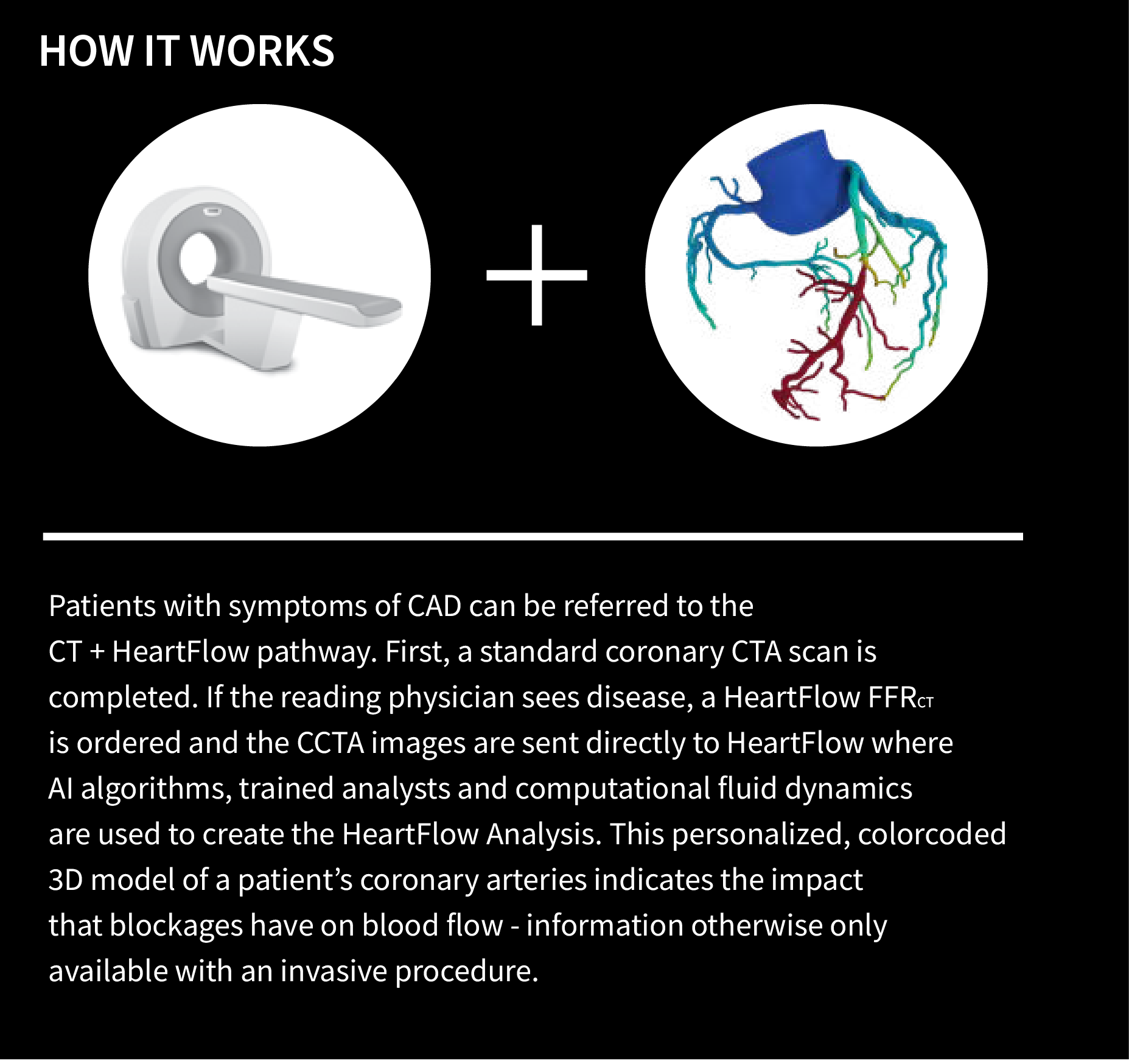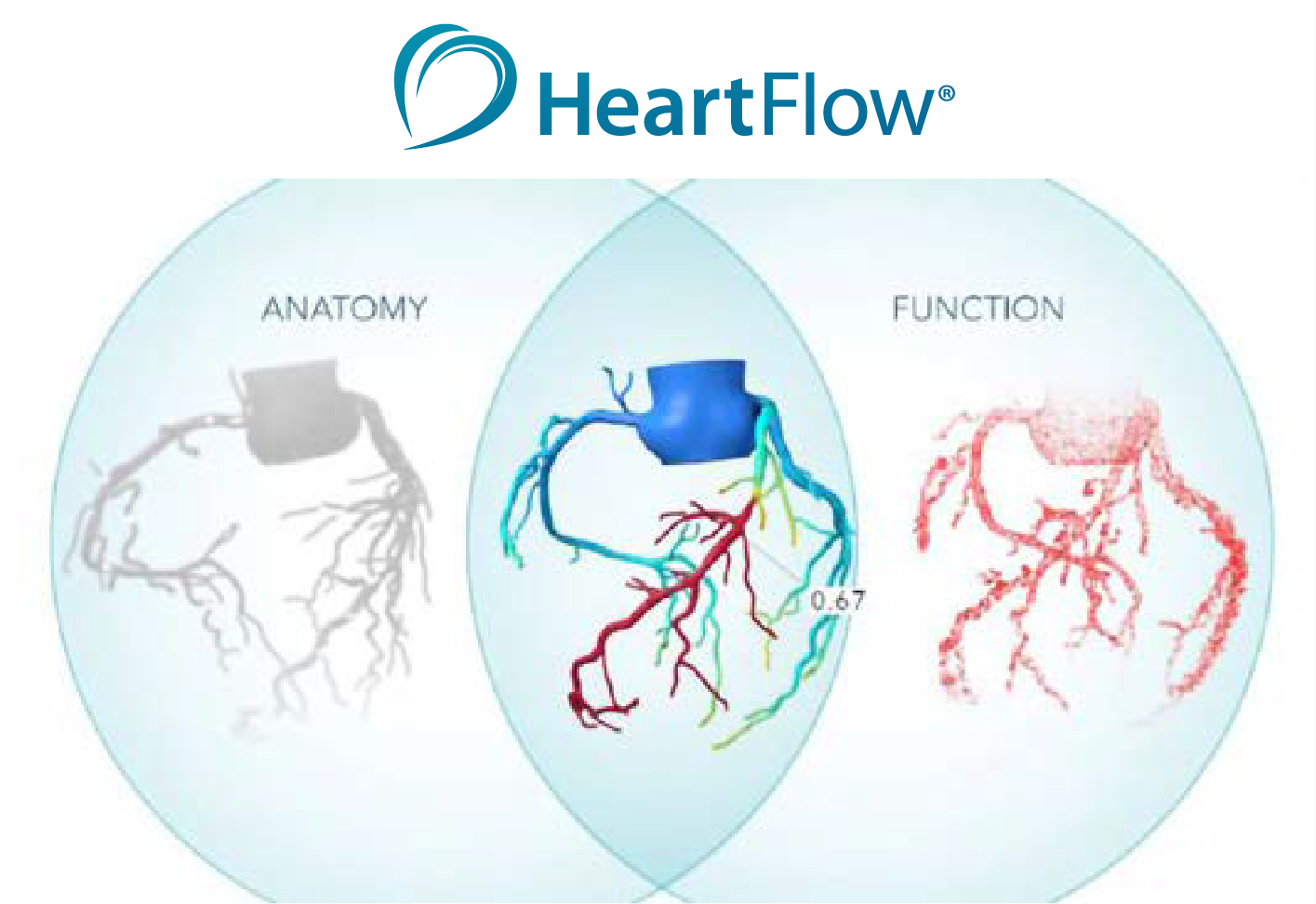How healthy is your heart?
Coronary artery disease is the most common type of heart disease. Radiologists at University Radiology are using the HeartFlow Analysis to non-invasively test their patients for coronary artery disease. This advanced technology provides a personalized digital 3D model of a patient's coronary arteries that shows the impact that blockages have on blood flow to the heart.
Coronary CTA + the Heartflow FFRCT Analysis - A Better Pathway
Coronary CTA enables clinicians to non-invasively visualize a patient's coronary artery disease (CAD), but what happens when it's unclear if the disease is impacting blood flow?
This is where the HeartFlow FFRCT Analysis can help:
• Without additional patient tests, the HeartFlow Analysis quickly and non-invasively delivers functional information (FFRCT values) about each blockage.
• Completing the picture for each patient leads to better clinical decision-making and improved patient outcomes.1
• Recognized in ACC/AHA Chest Pain Guidelines to help guide treatment for patients with CAD.




